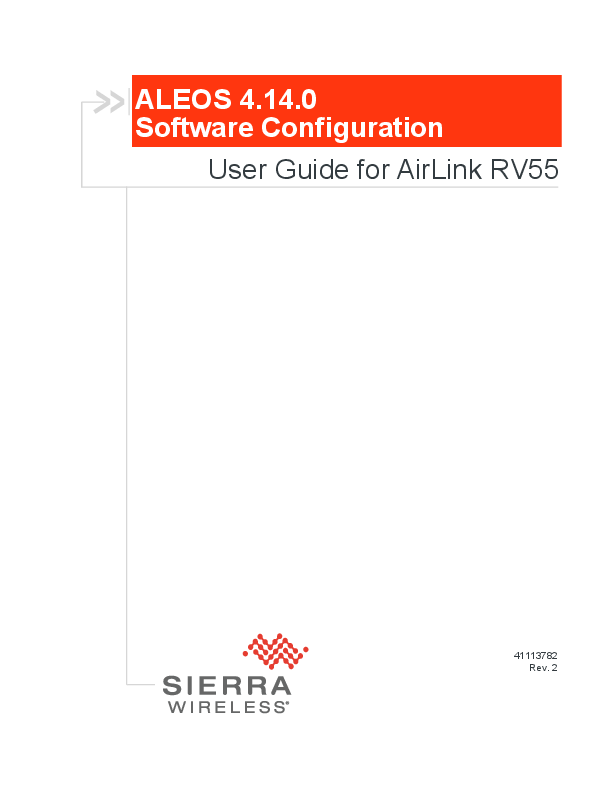Key Features and Configuration Areas
Explore the comprehensive capabilities of the AirLink RV55, including:
- Gateway Configuration and Template Management
- ALEOS Software and Radio Module Firmware Updates
- Enterprise LAN Management and PCI Compliance
- Network Monitoring (Cellular, Ethernet, Wi-Fi)
- Advanced Networking: VPN, Policy Routing, RSR, PNTM
- Security Settings: Port Forwarding, DMZ, Firewalls, MAC Filtering
- Services Configuration: ALMS, ACEmanager, Dynamic DNS, SMS, SNMP
- Location Services and Event Reporting
- Serial Communication (RS232, MODBUS)
- Application Framework and I/O Configuration
- Device Administration and Reset Options
- Radio Tools and Log Management
- Modbus/BSAP and AT Command Reference
About Sierra Wireless
Sierra Wireless is a leader in connecting devices to the cloud. Learn more about their solutions at sierrawireless.com.
For sales information and technical support, visit sierrawireless.com/company/contact-us/ or call 1-877-687-7795.
